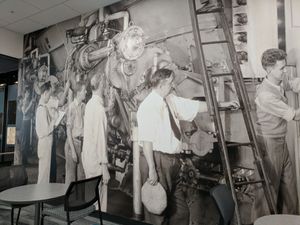There is a good description of why libraries should be interested in the concept of Service Oriented Architectures in Portals in libraries: library technology and planning for change, an article by Krisellen Maloney in the current ASIST Bulletin. Although the focus of the article is portals, I thought some of the wider context was well described.
Regardless of these advances, many library websites continue to replicate the physical and functional organization of the traditional library. Web-based access to services has evolved as a thin veneer over library technical infrastructures that were designed to support traditional library services. As such, library websites are typically organized around library functions (interlibrary loan, circulation, reference) or existing information stores (the card catalog, print indexes). Web-savvy users who are not familiar with traditional library organization methods do not view our websites as transparent or able to meet their information-seeking requirements. [ASIS&T Bulletin Oct/Nov 2004: Krisellen Maloney]
It is no longer possible to think of library technical infrastructures as a group of separate systems that will be accessed and used from the same starting point and in a similar manner by all users. Successful library systems will need to be designed as a set of core functional components that can be repurposed to suit the requirements of all user-level service needs and made available to a variety of application-level interfaces.[ASIS&T Bulletin Oct/Nov 2004: Krisellen Maloney]
Developing an understanding of changing user demands and the basic building blocks of a new architecture will be a challenge in our current technical environment where systems are organized around data (e.g., the catalog, vendor-based indexes and publishers) or services (e.g., interlibrary loan, circulation and reference). One approach is to design multi-tiered architectures that include an integration layer providing programming-level services for user-level applications such as a portal. These services extract information from existing systems and provide adapters that can be used to develop new applications. [ASIS&T Bulletin Oct/Nov 2004: Krisellen Maloney]
I agree that we will need to see this flexibility. One of the issues with a Web Services approach is that it takes two or more to play: there is no point in having one half only of a zipper.
These discussions always prompt me to ask whether we need a Reference Model, or architectural framework, for library services. By this I mean something like the JISC Information Environment Architecture, and the work which has flowed from it, or the IMS Digital Repository Interoperability specification. As we unbundle and recombine our services, would it be helpful to work with some similar blueprints?
(Full disclosure: I came across this article as Krisellen references the distinction I make between m-portals and p-portals.)



